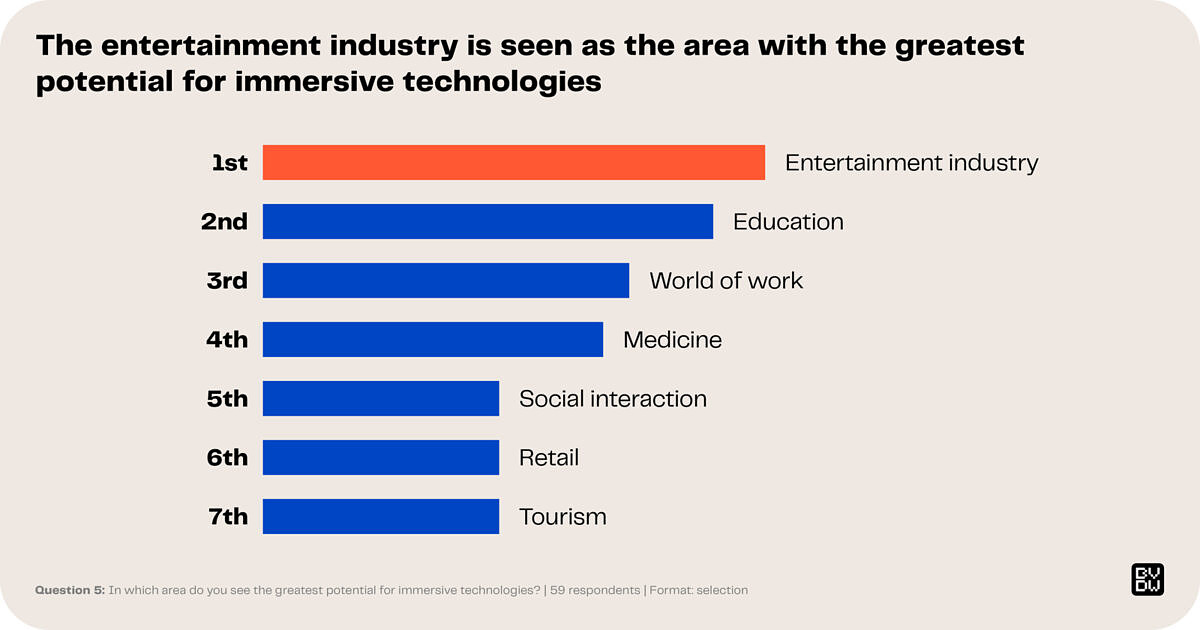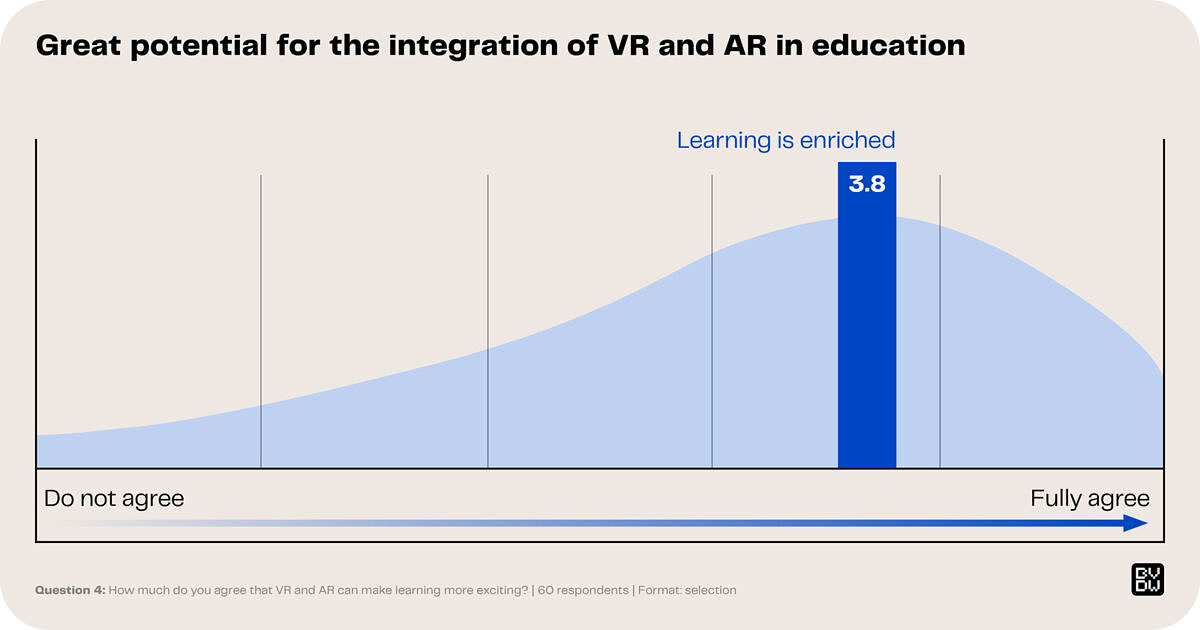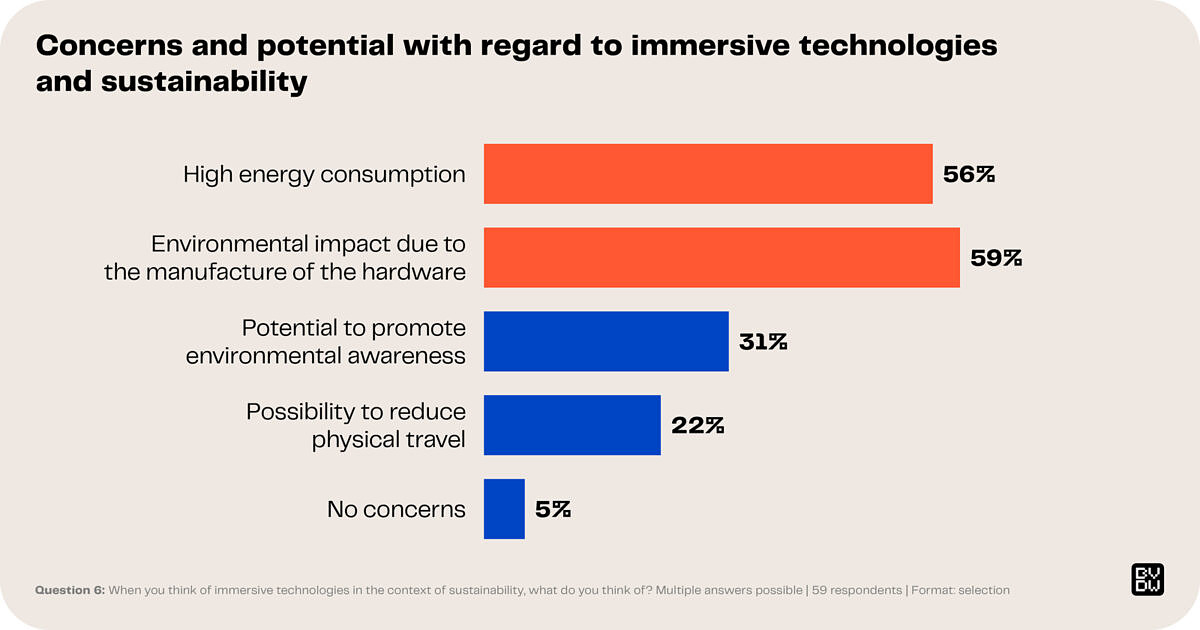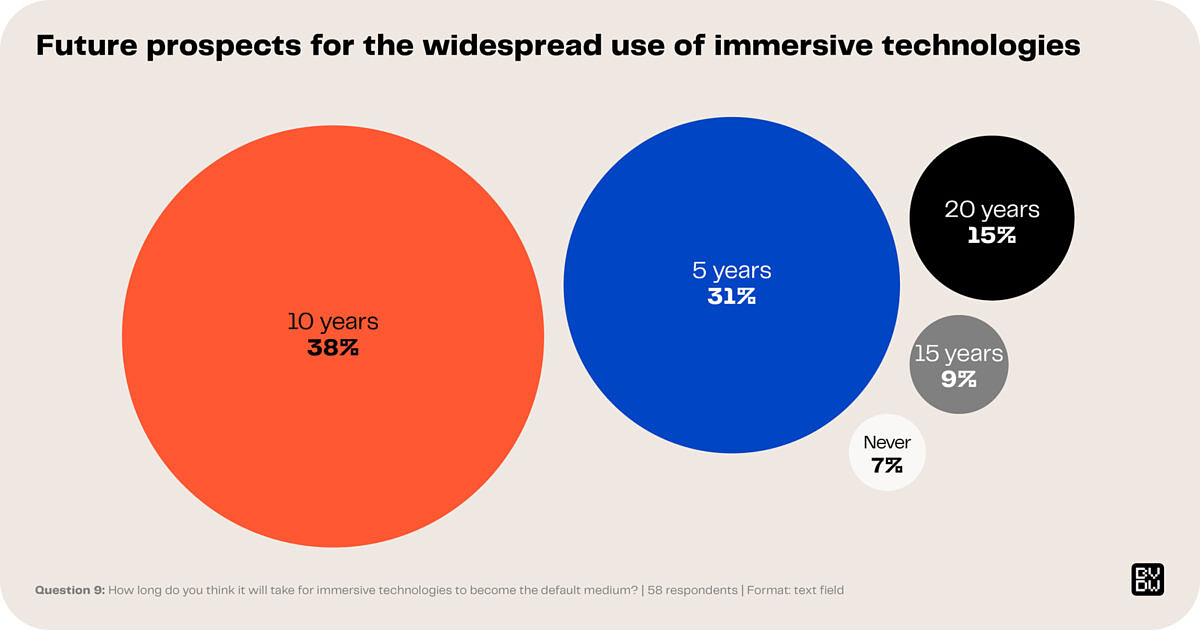Immersive experiences in marketing
A guest article from Katharina Jäger, Head of Innovation & Technology at the German Association for the Digital Economy (BVDW)

What do students think about future technologies?
Young people are regarded as inquisitive and always open to trying out new trends and technologies. But is that actually true? During a workshop, I asked marketing and communications students how they perceive current developments in the area of immersive experiences. And, as expected, the answer is more complex than things seem on the surface.
As a target group, young people play a key role when it comes to the introduction and acceptance of new technologies. Their early and active use of technologies can lead to greater market penetration and have a positive impact on acceptance among the general public and on the entire industry’s development.
At the “Meta & Friends” event in Munich on June 12, students from Ludwig-Maximilians-Universität shared their thoughts on immersive technologies. As Head of Innovation & Technology at the German Association for the Digital Economy (BVDW), I had the pleasure of getting involved by holding an interactive workshop. To start things off, the 70 students participating were asked about their affinity for VR, XR, and MR technologies, to which 65 percent responded that they already had experience with these technologies.
Knowledge gaps despite general openness
The high level of use shows a general willingness and openness to try out innovative technologies. However, another result from the survey shows that there is also some uncertainty and confusion among the young target group when it comes to terms such as the “metaverse” and “immersive experiences”. Only 13 percent of the students would say that these terms are synonymous to some extent, 50 percent would say they’re not really synonymous or not at all synonymous, while 37 percent were unsure. In this respect, greater clarification is called for and of paramount importance.

The entertainment industry as an innovation driver
The students see the greatest potential for immersive technologies in the entertainment industry, where VR movie theaters, immersive gaming platforms, and augmented reality experiences could set new standards at live events. Education and the world of work were ranked second and third respectively. Overall, immersive technologies are regarded as key drivers of innovation across a wide range of areas.

The generally positive rating of the statement that VR and AR can make learning more exciting also reveals significant potential for integrating these technologies in education and highlights the advantages that students feel they offer during the learning process. For example, VR and AR can make learning content more interactive and more appealing – which, among other things, can help learners absorb the material better. At the same time, it’s important that teachers actively incorporate the new technologies into their lessons and are trained appropriately on how to use them.

Environmental awareness and social inclusion play a major role
The students have concerns about the high energy consumption associated with immersive technologies and the environmental impact from the manufacture of relevant hardware. That shows that sustainability is a key topic for them.
However, 31 percent of the students also think that immersive technologies have the potential to promote environmental awareness and 22 percent think they could reduce physical travel. For example, VR and AR can be used to hold virtual meetings and events, replacing physical travel and reducing CO₂ emissions. In addition, targeted funding programs and incentives could support the development of technologies that are more energy-efficient and environmentally friendly. These include investments in research and development to find sustainable alternatives to conventional production methods and improve the energy efficiency of VR and AR devices.

The majority of the students (60 percent) have concerns that immersive technologies could exclude certain groups of people. They feel that it’s especially important that new technologies are made more accessible and meet the principles of “universal design”. The respondents emphasized the importance of taking the needs of different user groups into account when developing new technologies to make them accessible to as many people as possible.

Criticism of a lack of political support
The students felt that there is a lack of political measures to promote immersive technologies. With an average score of 2.3 on a scale of 1 to 5, they have a generally negative view of the political support available. Political initiatives and a clear regulatory framework are needed in order to fuel technological innovations. In this respect, proactive political support can strengthen acceptance among society and accelerate the widespread use of immersive technologies in various areas.
The final question posed to students was how long they think it will take for immersive technologies to become the default medium. The majority of students think it will take about 10 years for immersive technologies to become part of day-to-day life. 31 percent said five years, while 7 percent are of the opinion that it will never happen.

With that in mind, it takes time for people to get used to new technologies and integrate them into everyday use – that also applies to the young target group. Technological progress is only part of the solution here; an extensive societal shift and adaptation are also required. Educational institutions and political decision-makers play a vital role in facilitating this transition. Comprehensive educational and awareness programs are needed to prepare the general public for the advantages and potential uses of immersive technologies.
Collaboration as a success factor
Overall, the results of the survey show that young people are open to technological innovations but also require targeted information and support.
Associations, businesses, educational institutions, and political decision-makers must work together to harness the potential of these technologies and ensure that they are implemented inclusively and sustainably. Schools and universities have a key role to play here by integrating VR and AR into their curricula and enabling students to experiment with and understand these technologies at an early stage.
Targeted information campaigns and training programs can help better prepare young people for using immersive technologies, which can lead to greater acceptance and integration in their day-to-day life. There needs to be collaboration between the various societal stakeholders to maximize the positive impact of these technologies and build a sustainable and equitable technological future. For young people, that means not just being beneficiaries, but also having the opportunity to actively help shape this digital transformation.






